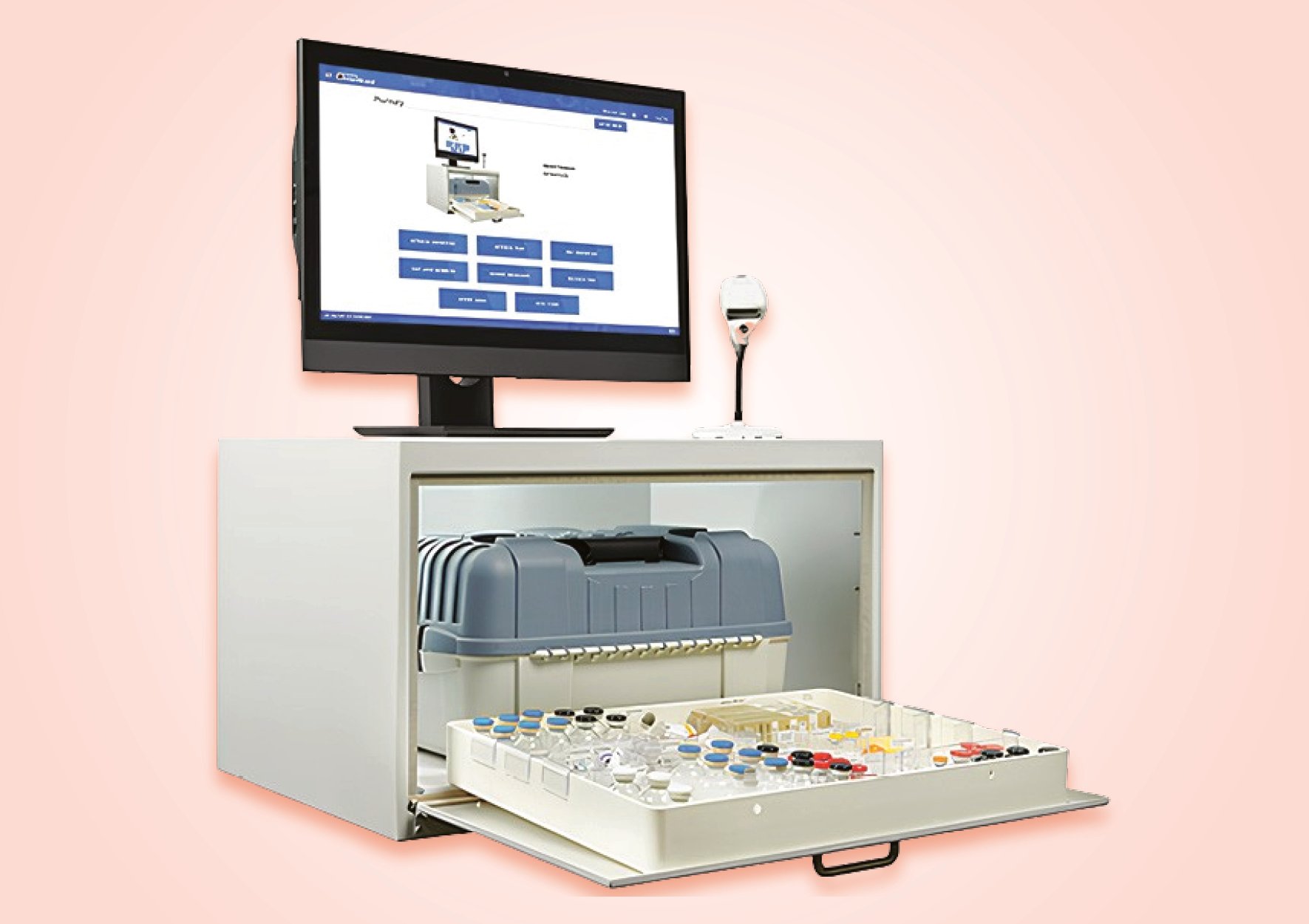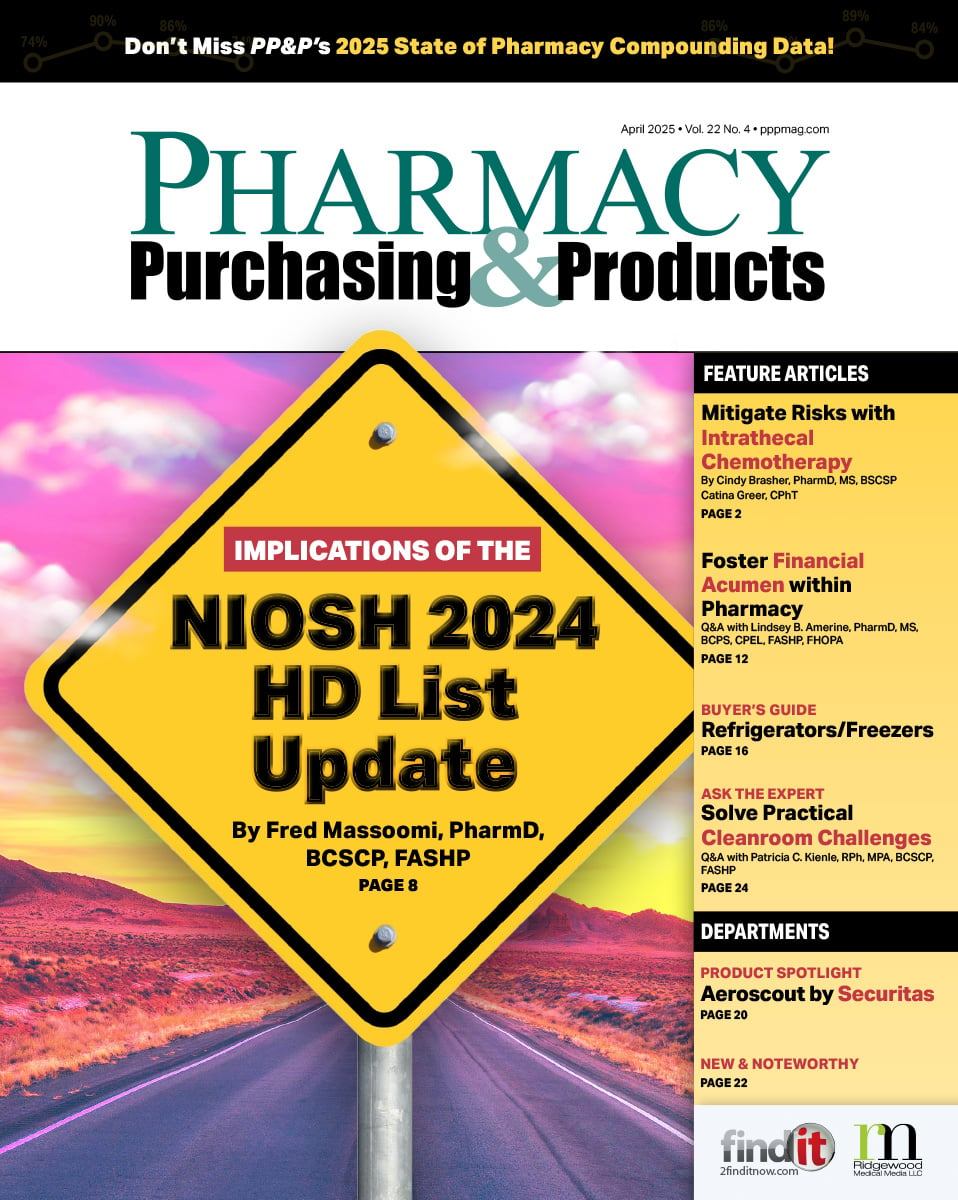- Show Menu
- Contact Us
- FAQs
- Reader Service
- Survey Data
- Survey Winners
- Testimonials
- Upcoming Events
- Webinars
- White Papers
Reduce Waste with a Returns Service
Q&A with Shirley Simeck
Pharmacy Operations Manager Our Lady of Lourdes Hospital
Pharmacy Purchasing & Products: What is your system for managing returnable drug products?
Shirley Simeck: Our policy is to review all medications quarterly, although we are usually able to perform these checks monthly. Both pharmacists and technicians are assigned sections in the pharmacy—such as the IV room, injectable medications, topical medications—and that individual is responsible for checking those drugs for approaching expiration dates. Also, reports are run from the automated dispensing cabinets to check for expired medications, and all medications stored in these machines are physically checked by staff monthly. We have a small room in the pharmacy where all outdated medications are segregated until our pharmaceutical returns service representative comes to retrieve them, also on a quarterly basis.
For controlled substances, the returns process is much more involved. Expired controlled substances are stored in a specific bin in the controlled substances safe and processed quarterly. The day before the service representative comes in, these medications are reconciled against a report produced through the safe that lists all the returnable products. The report is printed again when the representative arrives in case additional items have expired in that 24-hour period. The expired inventory is checked against the report, and this process is then repeated with a witness to ensure there are no discrepancies before pharmacy signs off on the list of returns. The representative then completes the DEA Form 222, which is required to return schedule II narcotics. A copy of this form is retained by the representative for the vendor’s records, another copy is left with us, and the third copy is mailed to the DEA the day the returns are shipped out. It is beneficial having someone manage returnable controlled substances onsite, as it mitigates the risk of these substances being diverted—either internally or through the service.
There are few hazardous drugs that our returns vendor will accept; those hazardous items that are accepted, such as outdated chemotherapy, are placed in chemotherapy transport bags to identify them as hazardous and then stored with the rest of the returnable products. To help ensure non-returnable hazardous products are not inadvertently deposited with returnable items, P- and U-listed hazardous drugs are identified as such in the automated dispensing cabinet medication description. This alerts nursing and pharmacy staff that these products must be disposed of in a black bin located on the nursing unit. The pharmacy also has a black bin in the IV room for hazardous product disposal. We educate staff on the proper disposal of these products, and conduct regular competency reviews of the pharmacy staff.
Before we started using a returns service over ten years ago, managing returnable items was a nightmare. We had a storeroom full of boxes and bins for every manufacturer and we would throw the expired products in the appropriate bin and then process them ourselves. Returning these items to the manufacturers in time to get credited, was a tedious, time-consuming process. Employing a returns service to manage this process allowed more credits to be captured and freed up staff for other tasks.
PP&P: How have reports available through the returns service helped reduce waste?
Simeck: We have access to a variety of online reports through our vendor, which allow us to review exactly what is being returned for various time periods, how we are being credited, and the reasons we are not credited for certain items. One report that we find useful is the NDC Non-creditworthy by Reason Code—Top 25 report, which provides a list of medications and the reasons for not receiving credits. These detailed reports have helped us adjust purchasing decisions and practices to be more precise, which leads to less waste. For example, we noticed that we were returning large dollar amounts of several of our chemotherapy medications, such as trastuzumab and cetuximab injection, and not receiving credits, so we shifted to an on-demand purchasing model for chemotherapy so we are no longer carrying an abundance of these items in stock. In addition, these reports have helped us amend how automated dispensing cabinets are stocked, so we are turning over medications more quickly in the cabinets and wasting less. I would encourage hospital pharmacy managers to take ample time to become familiar with the online reports offered through their pharmaceutical returns service. This may seem cumbersome, but spending some time up front on this effort can result in savings in the long run.
Remember, when evaluating returns providers, it is important to review the type of reports they will be able to provide, and whether they will be available online. The more detailed the reports, the easier it will be to track credits and make valuable purchasing and formulary decisions to help reduce waste.
PP&P: How is the credit reconciliation process managed to ensure that all possible credits are received?
Simeck: Credits are tracked online through our provider; once the returns have been processed, the service posts this information, along with the anticipated dollar amount expected. Once a credit or check from the wholesaler comes in, we update this online. In order to stay on top of credit tracking, I dedicate about an hour to this process bi-weekly. If a credit is not received as expected, which is not uncommon, we can either call the manufacturer or have the service representative inquire for us.
While managing the credit reconciliation process can be tiresome, having the online tracking tool and the help of the service representative has been beneficial in facilitating this process. Considering that we reap around $60,000 annually in credits, it is critical that credit reconciliation is properly managed.
Shirley Simeck is the pharmacy operations manager at Our Lady of Lourdes Hospital in Binghamton, New York. Prior to this, she was the pharmacy buyer there for 20 years. She is a member of the hospital’s emergency preparedness committee and the pharmacy/therapeutics & nutrition committee.
Like what you've read? Please log in or create a free account to enjoy more of what www.pppmag.com has to offer.








